Touring around the design projects of the prolific designer, Alberto Pinto.
Alberto Pinto, the background
Alberto Pinto, 1943 – 2012, was born to Argentinian parents in Casablanca. Pinto was a photographer and interior designer working on domestic interiors, corporate spaces, hotels, yachts and aeroplanes. It was the direction in which his photographic work took him, specialising in interior design, that led him to start designing interiors himself.
Pinto himself loved enormous spaces although he claimed not to love one particular style. His penchant for large space was to create a cosiness within it despite the “restraints” of size.
Pinto has inspired other designers for many years and it seems his influence will continue indefinitely, having a truly timeless quality. Pinto’s work was an inspiration for the recent renovation of a London warehouse into the exceedingly glamorous Devonshire Club Hotel. For the interior designers, luxury and style were at the core of the design ethos and it is clear how Pinto’s designs have provided a rich source of ideas.
Pinto’s company did not close upon his death in 2012. Cabinet Alberto Pinto is still going today, based at 11 Rue d’Aboukir, 75002 Paris, and is very actively managed by Pinto’s sister and long-time business partner, Linda Pinto.
Textiles and soft furnishings
Pinto developed product ranges of furniture, tableware and home accessories in conjunction with manufacturers and also fabrics with textile manufacturer, Pierre Frey.
The collaboration with this fabric house produced distinctive and eternally modern textile designs. The designers of the Devonshire Club Hotel, created from a London warehouse, quoted Pinto as one of their inspirations for the glamorous and tailored interior they have created. You can read more about this project here. The lines of the furniture and the styles of the upholsteries clearly reveal the Pinto influence.
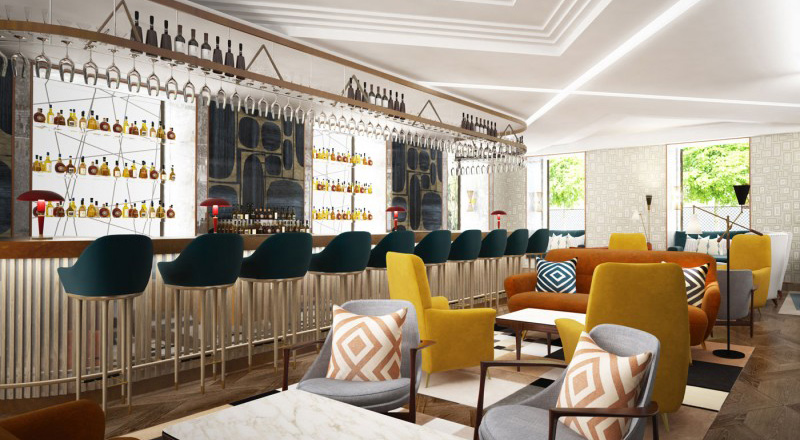
The clear, bold design of furniture and fabrics for the Devonshire Club Hotel in London was inspired by the work of Alberto Pinto. Shown here is the Champagne Bar. Interior design by March & White.
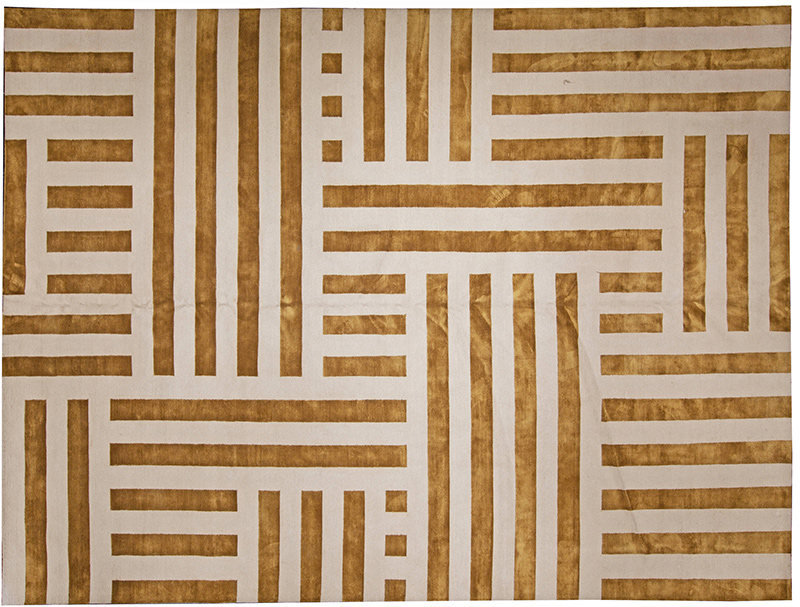
Tribal rug design by Alberto Pinto
Arts de la table
This is a term describing the art of the placement of all that is involved in creating a beautiful table in an informal or formal setting. It includes the dinnerware, glasses, siver, lighting, decorations and also the etiquette and manners needed to make a dinner go with a swing.
Pinto was greatly absorbed in Arts de la Table and designed tableware including cutlery and crockery and in 2009 a company representing these products, Pinto Paris, was set up and is run today by Davina Koskas
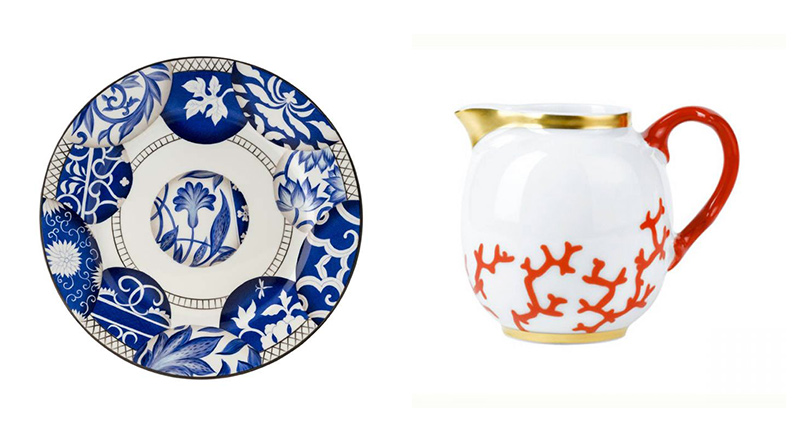
Two tableware ranges designed by Alberto Pinto for Raynaud in Limoges porcelain. On the left is Shanghai, Pinto’s reworking of the traditional Chinese blue and white design. On the right is the Cristobal design of a burnt-orange-red coral on a white background with a gold rim and base. The “red squiggle” of the coral motif recurs on Pinto’s fabric designs for Pierre Frey.
Having designed the crockery Pinto also designed a range of cutlery called “Paris” for the silversmiths Ercuis. The design is surprisingly restrained, consisting of a graceful loop around the top of the handles and, when repeated lower down, forming a cross-over design.
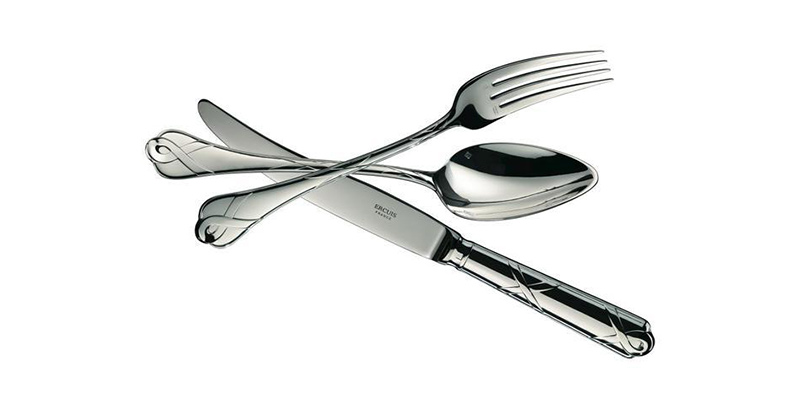
The “Paris” cutlery designed by Alberto Pinto for the Parisian silversmiths Ercuis.
Furniture
Pinto’s furniture is exuberant with a surprising combination of the massive and the slender, the tribal and the Art Deco, with some Biedermier influences seen especially in the elegant and sweeping use of the timbers.
His Copacabana table is in the “massive” category. Gloriously burnished and decorated with enormous wooden balls sandwiched between circular timber plates to create the centre pedestal it is actually designed with practical dining in mind. The outer section of the table top splits into four and the segments pull out to extend the 168 cm diameter to 225 cm.
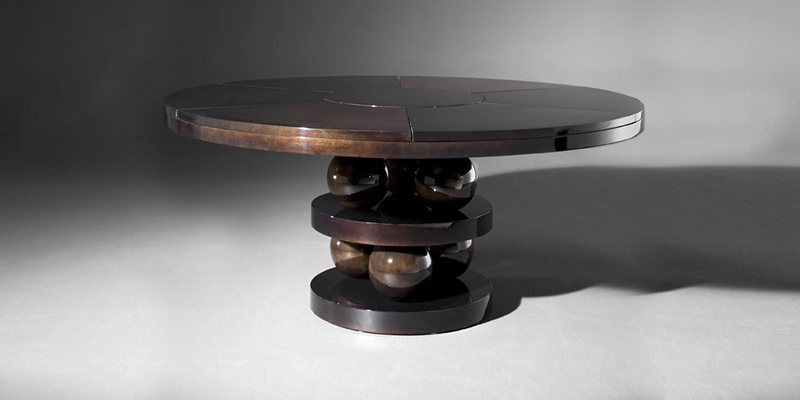
Alberto Pinto’s Copacabana dining table. Massive, bold and yet practical. You can see the divisions where the table splits and pulls out to extend the seating capacity.
The Tartaruga table-base is not made from timber but from hand-sheened bronze. The saucer-esque table-top is formed from lacquered resin, described as red but very definitely orange, with a hammered and hand-sheened brass centre.
Would you even consider Pinto’s, now iconic, Tartaruga table to be from the hand of the same designer, if you didn’t already know?
The boldness of line and finish might be a clue but the style is that of so many mid-century modern classics, orientally influenced, clean, sweeping lines and colour borrowed from the sculptor Alexander Calder perhaps? Very different from the tribal and stately Copacabana model.
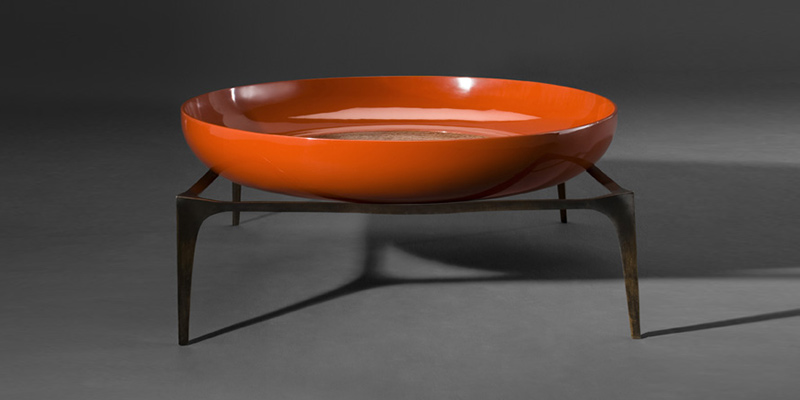
Alberto Pinto’s Tartaruga table in bronze, lacquered resin and brass.
Architectural
From Arts de la Table Pinto moved into architectural fittings.
THG manufacture taps, or faucets, and collaborated with Pinto to create a range called LE 11. The design is a combination of spherical and right-angles reminiscent of an art deco style.
What is constantly surprising about Pinto’s work is its evergreen quality. It simply never goes out of fashion. Yet combined the pieces create anything but a “safe” middle of the road effect. Is it his pure daringness that ensures his designs survive so well?
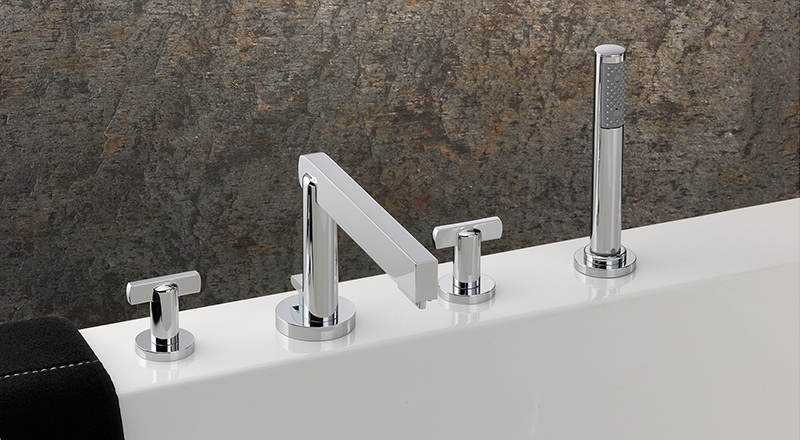
The LE 11 range for THG tapware by Alberto Pinto
Pinto also designed a series of mosaic tiles for the Moroccan tile company Aït Manos which is based in Casablanca, his birthplace.
Yacht design
The truly glamorous style of Pinto naturally lends itself to yacht design – and he worked on a great number of them. The first one he designed was for a descendant of the Gucci family and he went on to work on the famous Oceanco’s Yachts Natita, St Princess Olga and Alfa Nero and Lurssen’s motor-yacht, Quantum Blue.
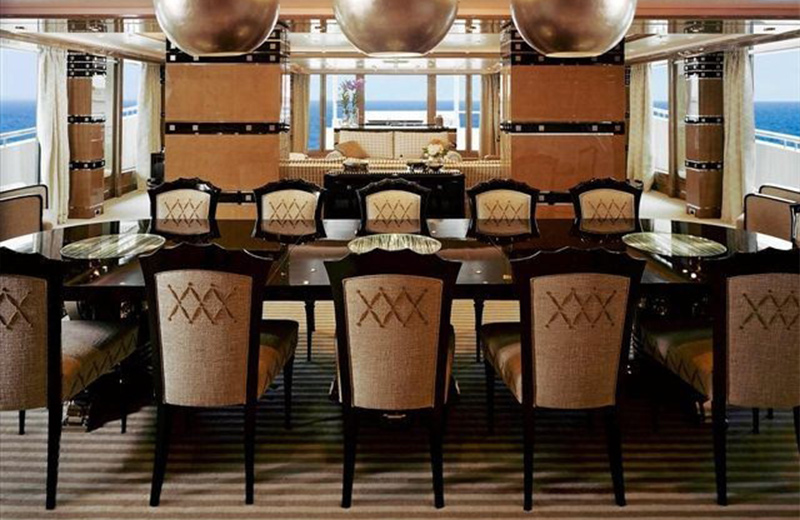
Dining area on the Oceanco Natita motor-yacht by Alberto Pinto. The silver space-invader light fittings are a bold and light-hearted touch.
Pinto’s love of rich fabric, glossy finishes, warm timbers and his love of making the stately more homely, albeit in a highly stylish way, clearly suited the brief for all the yachts he designed – if anyone ever needed to give him a brief of course. In 2007 the Dutch shipyard Oceanco, whose yacht purchasers commissioned Pinto over the years for many of the Oceanco yachts, launched the 82 metre superyacht Alfa Nero. This was designed to the true Pinto style, with, of course, his favourite twiggy coral design actually printed in the colour-way of white and coral.
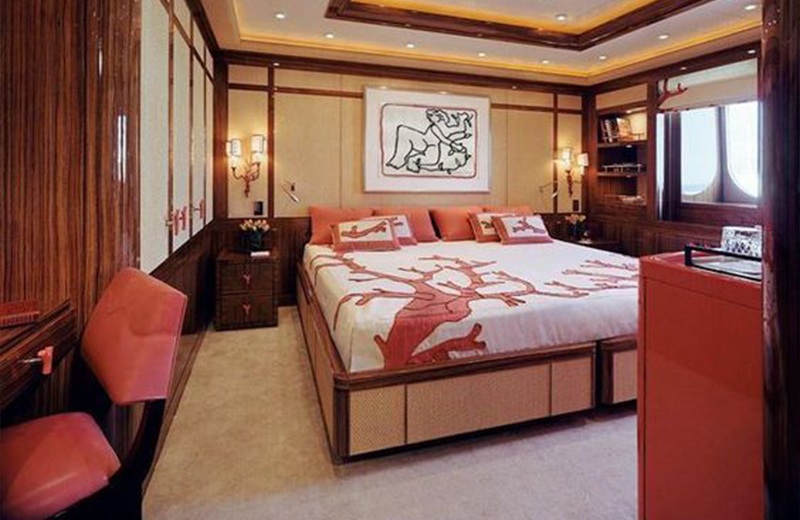
Alberto Pinto’s favoured coral motif recurs in the bedroom design of the Oceanco Natita motor-yacht
In an interview with Ivan Meade in 2011, only a year before his death but so full of passion and anticipation for his upcoming projects (the Odeon Tower in Monaco and the Hôtel Particulier) Pinto said, in response to a question regarding how he might define his work:-
“One characteristic aspect of my work is the complete refusal of monotony and boredom of formulaic compositions. I like to juxtapose different shapes and eras.
About colors, I like strong, honest hues and do not hesitate to play with powerful contrast to give my interiors as much energy as possible.”
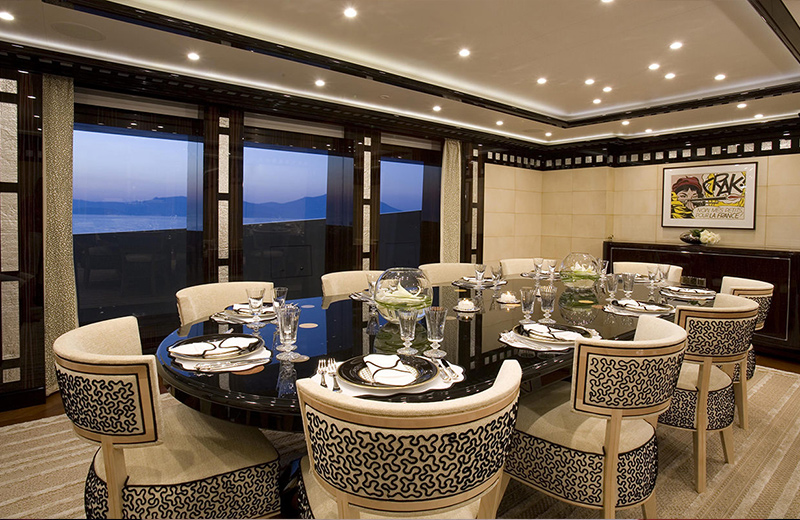
The Alfa Nero superyacht by Oceanco and designed by Alberto Pinto, launched 2007. Note the signature squiggly coral design on the upholstery